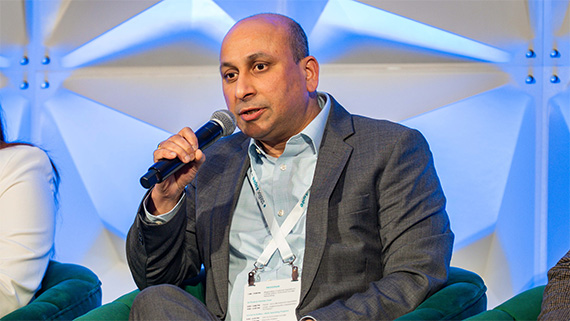
At Aspire 2025, the conversation around AI in life sciences shifted from theoretical to tactical. One of the most grounded and insightful voices on the panel was Devendra Deshmukh, who recently joined Excelra, a ~1,000-person bioinformatics and data science firm, after a storied career at Thermo Fisher, Merck, and PerkinElmer.
In a conversation moderated by John Seffernick, SVP of Strategy at Stellix, Devendra offered pragmatic advice on where AI is delivering results today—and where life science leaders must double down if they hope to realize its full potential.
John: Let’s cut through the buzz. Where is AI actually working right now?
Devendra: At Thermo Fisher, AI had clear traction in operational efficiency—specifically with their internal deployment of ChatGPT. Gene.AI, as it was known internally, was widely used for a variety of purposes. But one area where it had significant impact was improving response quality and time for laboratory services and support. Large volumes of technical documentation were uploaded into Gene.AI with tangible value—more actionable information delivered faster to the engineers’ fingertips.
At Excelra, the focus is on data quality at scale. We curate datasets from public and proprietary sources for big names in life sciences and apply AI internally to ensure that the data fueling decision-making is clean, context-rich, and usable. This behind-the-scenes application might not grab headlines, but it drives everything else.
John: Everyone wants ROI. How are you thinking about measuring it?
Devendra: Start by breaking ROI into three buckets:- Return on Employee Experience – Is AI making people’s work easier or more productive?
- Return on Finance – Are we seeing cost savings or improved operational throughput?
- Return on Future – Are we learning fast enough to stay ahead of the curve?
This 70/20/10 approach—focused mostly on immediate outcomes but reserving space for long-term bets—helps ensure balanced, forward-looking investment.
John: And what about trust? How do you get users to actually adopt new tools?
Devendra: Trust is a barrier. People instinctively return to familiar systems, even after being trained on better ones. You must support and incentivize people to adopt new systems and tools. But sometimes, you also need to deliberately phase out legacy options. If both exist in parallel, most users will revert to familiar ways of working because that’s where they’re most comfortable.
It’s also about granularity. Not every process needs to be automated. Break things down into discrete elements. Identify which ones are suited for full autonomous task execution. Others demand a human-in-the-loop approach. The trick is figuring out where to draw that line.
John: What’s your perspective on agents and autonomy?
Devendra: Agent-based systems are going to explode in adoption—but the architecture must be modular. Some tasks, like document authoring or SOP execution, are ready for full automation. Others require oversight.
I also see multi-agent systems becoming the norm. One group recently recreated the functionality of DocuSign in six hours using agents. That speed and flexibility are redefining what's possible for enterprise software—and the life sciences are next.
John: What’s your playbook for change management?
Devendra: At Thermo Fisher, we leaned into a train-the-trainer model. We built cohorts of change agents who became AI advocates in their own teams. These people weren’t techies—they were trusted voices in the business. That peer-led model, supported by Microsoft Copilot integration, helped us normalize AI use fast.
Now at Excelra, the focus is shifting to data fluency and AI literacy. AI tools are only as effective as the data pipelines and workflows they’re embedded in.
Final Takeaway
Devendra’s advice for life science leaders? Seek progress over perfection, at speed, with trust in mind.“AI won’t succeed as a top-down mandate alone. It needs to become part of the work culture. Start with what your people do every day—and use that as the lens for where AI can help.”


